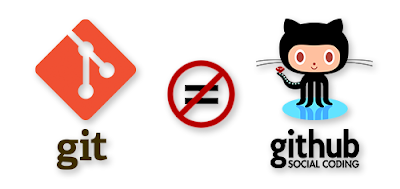What is Git?
Git is a free and open-source Distributed Version Control System (DVCS) used to manage source code. The term distributed in Git indicates that the repository is not only stored on the server but its copy is also stored locally in each development machines. The copy stored locally is called a local repository whereas the one stored on the server is called a server repository. User can commit (save) their code changes to the local repository until they are ready to move the changes to the server repository using a PUSH operation. Similarly, the local repository can be updated with the latest changes from the server repository using a PULL operation.
To use Git on the terminal console you will have to download, install and configure Git on your computer however Git is available out-of-the-box on Mac machines. The Windows version of Git is called GitBash.
Common Git commands and their use are explained in this article.
What is GitHub?
GitHub is a web-based hosting service for Git repositories and is basically an SCM (Source Code Management). It provides a user interface to list branches created for Git and allows you to share your repository with others as well as access other repositories.
GitHub is used for access control and provide features like team management, bug tracking, code review, etc. A free account can be created on GitHub but it also offers Enterprise, Team and Pro accounts. GitHub Enterprise is hosted on the cloud and can also be deployed on-premise, Azure or AWS.
To move your project to GitHub, create the repository in Git and follow the steps listed here.
GitHub is not required to use Git. Git can be integrated with various web-based SCM such as GitHub, VSTS, GitLab and Bitbucket.
Git is a free and open-source Distributed Version Control System (DVCS) used to manage source code. The term distributed in Git indicates that the repository is not only stored on the server but its copy is also stored locally in each development machines. The copy stored locally is called a local repository whereas the one stored on the server is called a server repository. User can commit (save) their code changes to the local repository until they are ready to move the changes to the server repository using a PUSH operation. Similarly, the local repository can be updated with the latest changes from the server repository using a PULL operation.
To use Git on the terminal console you will have to download, install and configure Git on your computer however Git is available out-of-the-box on Mac machines. The Windows version of Git is called GitBash.
Common Git commands and their use are explained in this article.
What is GitHub?
GitHub is a web-based hosting service for Git repositories and is basically an SCM (Source Code Management). It provides a user interface to list branches created for Git and allows you to share your repository with others as well as access other repositories.
GitHub is used for access control and provide features like team management, bug tracking, code review, etc. A free account can be created on GitHub but it also offers Enterprise, Team and Pro accounts. GitHub Enterprise is hosted on the cloud and can also be deployed on-premise, Azure or AWS.
To move your project to GitHub, create the repository in Git and follow the steps listed here.
GitHub is not required to use Git. Git can be integrated with various web-based SCM such as GitHub, VSTS, GitLab and Bitbucket.

No comments:
Post a Comment